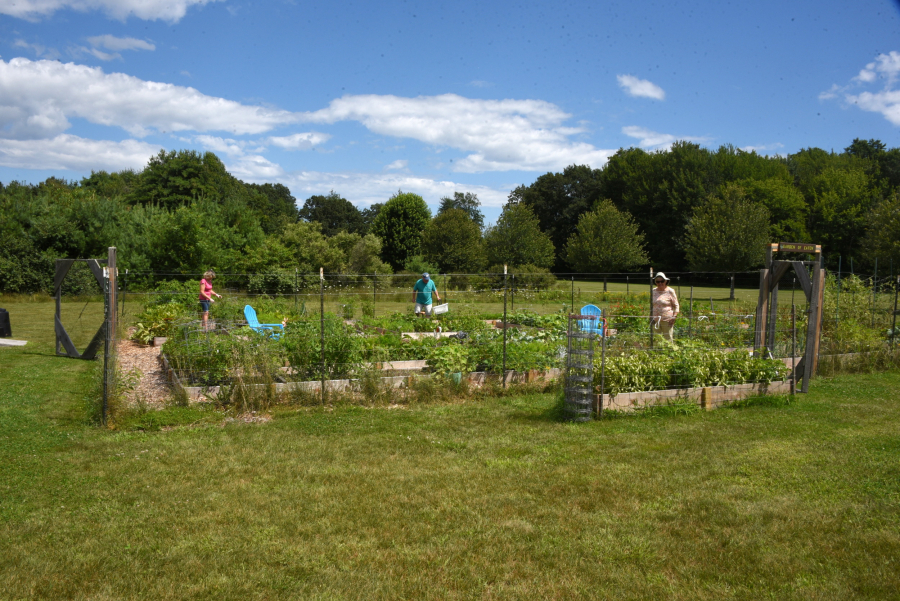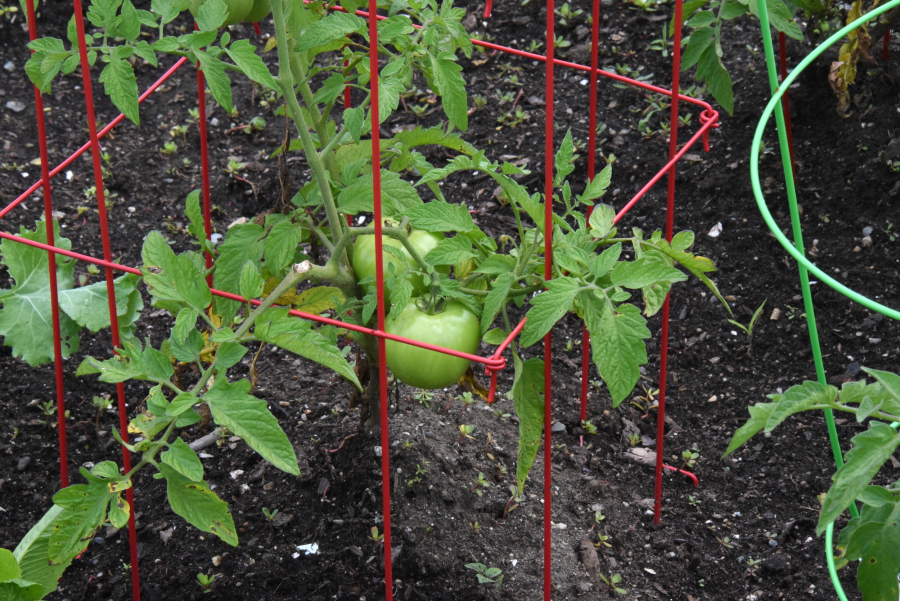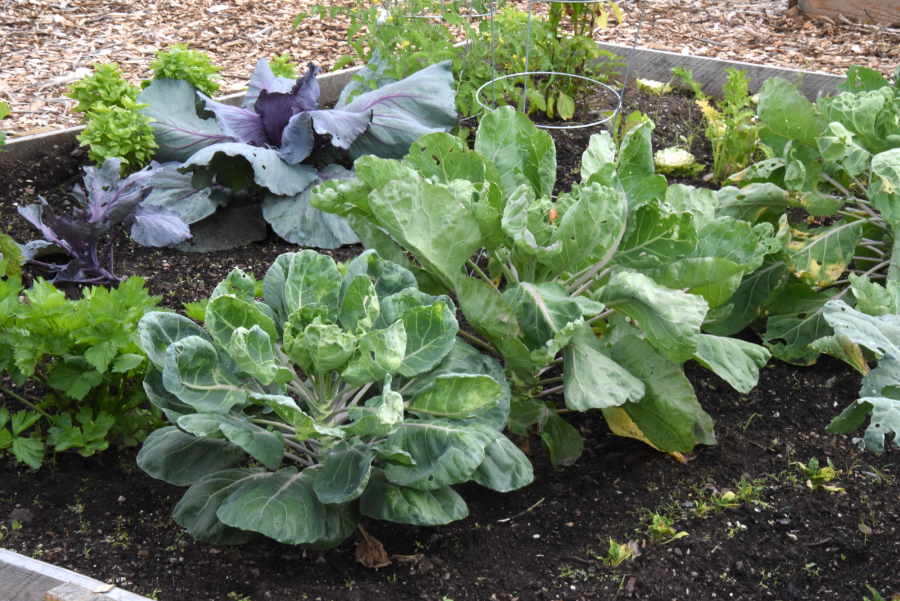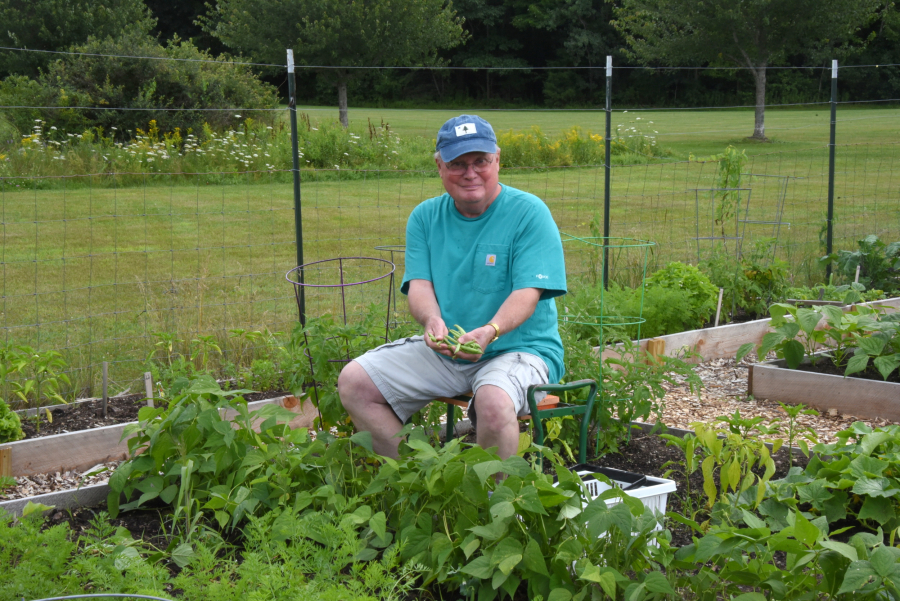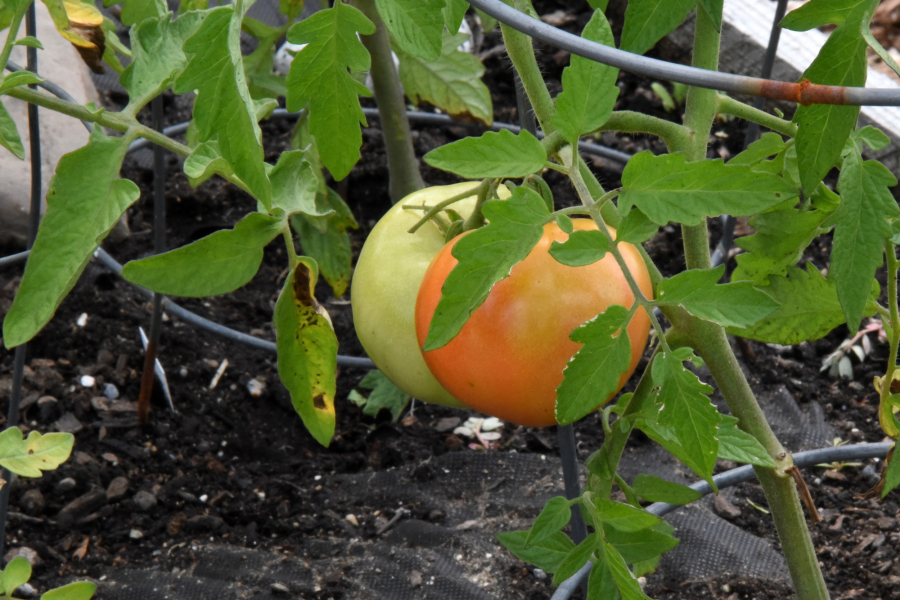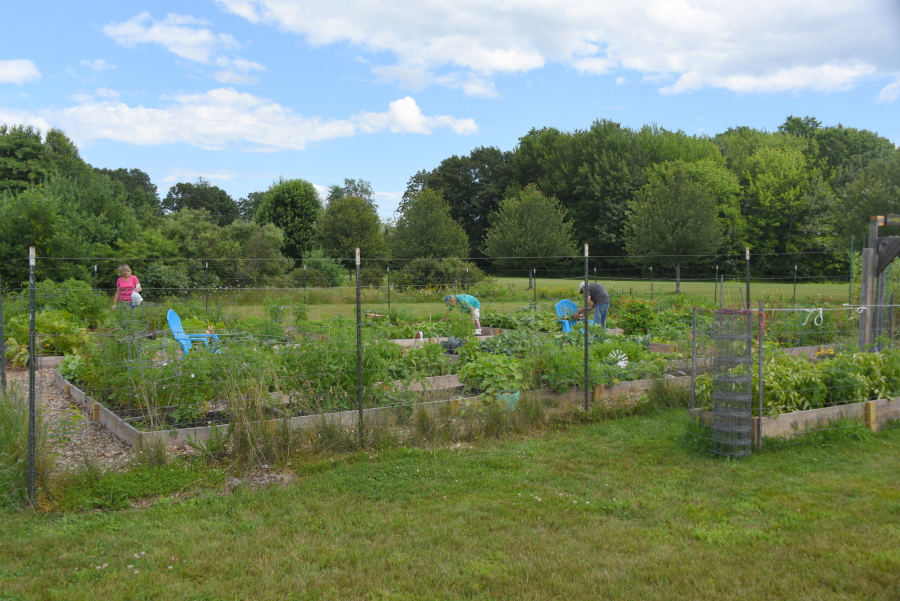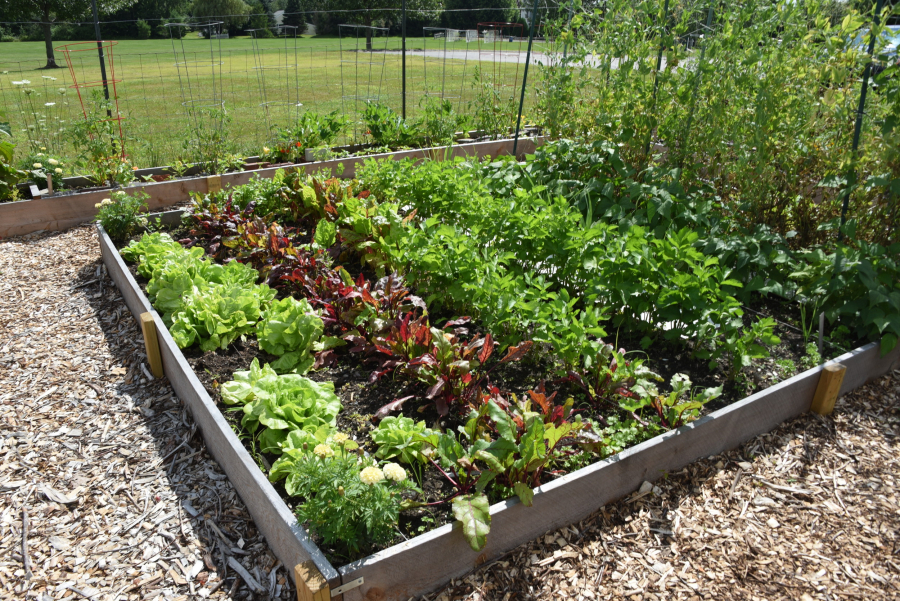Garden of Eaten is a Growing Success Story
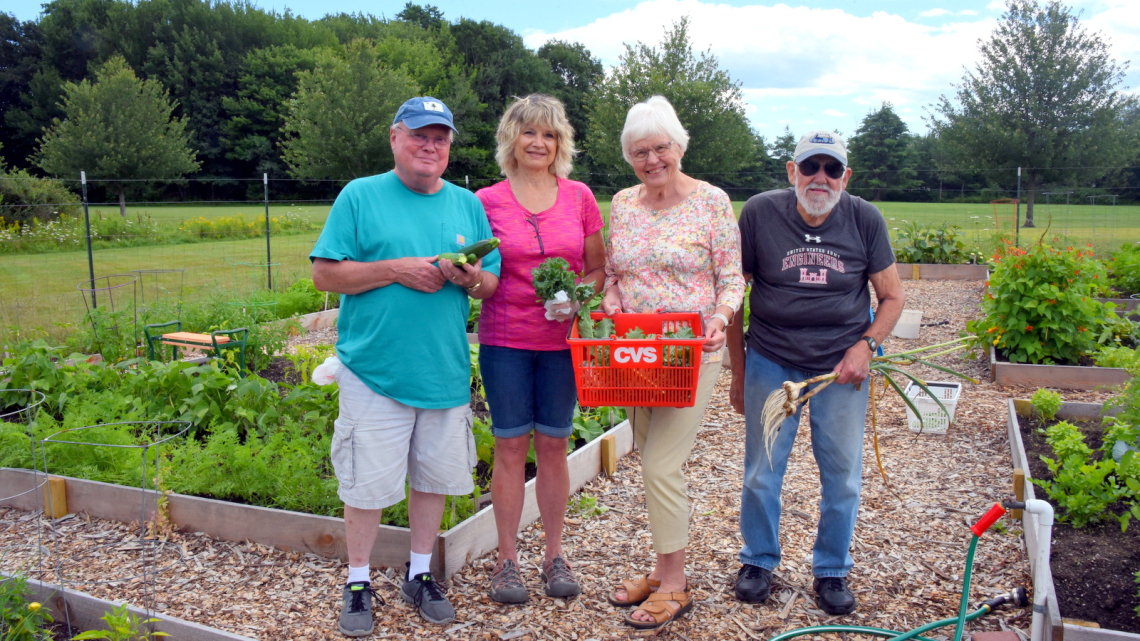
Cross over the threshold into the Garden of Eaten in Scarborough, and you will see rows and rows of plants filled with ripening vegetables.
“We have beautiful onions over there and carrots in abundance. The string beans have been doing very well, and we have kale,” says Paul Chamberlain.
Add to that cucumbers, lettuce, potatoes, snap peas, squash, and more.
“My favorite is eggplant. I have three little plots over there, and I have eight eggplants and some tomatoes,” says Madelyn Murphy.
The Garden of Eaten is a project of St. John Paul II Parish. It was created eight years ago on the grounds of St. Maximilian Kolbe Church in Scarborough, giving parishioners an opportunity to grow vegetables for themselves and for the South Portland Food Cupboard, which serves individuals and families who are food insecure.
The raised-bed garden consists of eight 10’ x 12’ plots and 47 “kiddie” plots, which are 2’ x 4.’ At the beginning of each season, for a minimal fee, members of any of the parish’s three churches can sign up to manage a plot or plots.
“My family has a history of farming potatoes up in Aroostook County, so I think I got my love for planting there,” says Kathy Cropley, who has participated in the Garden of Eaten for three years. “It doesn’t have to be that big of a plot, and you can give vegetables to the food pantry and get some for yourself.”
“My father always had gardens growing up, and I used to help him a lot. It is a lot of fun,” says Chamberlain, chair of the parish’s Garden of Eaten Subcommittee. “And helping people out is a big thing. To give to the food cupboard and to see what goes on over there is amazing.”
The parish has a special connection with the food cupboard because it was originally a church ministry. Now an independent 501(c)3, the cupboard was founded by parishioners from Holy Cross Church in South Portland in 1997 and used to operate out of the former St. John the Evangelist Church in South Portland.
Since the garden’s inception, 6,671 pounds of produce have been donated to the food cupboard, with a record 1,300 pounds donated last year alone. In addition to parishioners donating from their own harvests, one of the large plots is set aside for the cupboard. Parishioners team up to tend to it.
“I do the beans. Kathy does the carrots. Nancy Irving does the beets. Cath Williams does the peppers. Lynn Mistretta does the eggplant, and the Capobianco Family does the squash,” says Chamberlain.
Tuesday is harvesting day for the cupboard. The herbs and vegetables are collected in a shed, weighed, recorded, and then one of the gardeners brings the produce to the cupboard the following morning, where it is a welcome addition to the food that is distributed there.
“Community gardens like the Garden of Eaten play a big role,” says Jim Welch, the cupboard’s operations manager. “When people come through the line, and they see fresh stuff, their eyes light up. They’re very happy to see it.”
In addition to the produce it donates, Welch says the Garden of Eaten has also benefited the cupboard by inspiring other gardens to do likewise.
“It also influenced others to give out of their home gardens, so in the big scheme of things, it really weighed big,” he says.
“They clearly appreciate it, and we appreciate it, too. Being part of it is a good feeling,” says Murphy. “I volunteered at the South Portland Food Cupboard for years, and I could see the need for vegetables and for all types of food. The recipients really appreciate fresh vegetables, and without a question, there is a real need for them. Their number of clients is growing every year, so this is a wonderful thing that we’re doing here.”
The Garden of Eaten was originally created with the help of a $4,000 grant from Catholic Campaign for Human Development and through the support of community organizations and businesses. It continues to receive a donation of garden soil each year from Broadway Gardens, and Colonial Tree and Landscaping in Buxton donates wood chips for the fenced-in ground surrounding the plots.
The wooden beds, which Guibord and another parishioner, Larry Cain, rebuilt this year, use a method called lasagna gardening. A base is created using materials such as compost, cow manure, newspapers, straw, and stone dust, and then, that is topped off with garden soil.
“There are seven layers, and then, in the fall, we cover it all with straw and just let it go. In the spring, we come out and pull the straw away, and we can see worms. They really thrive in there,” says Chamberlain.
The gardeners mix in some fresh garden soil and then plant whatever crops they wish.
“I try different things. For instance, I have been working with different types of garlic,” says Guibord. “I’ll bring it home, dry it, cut off the ends, and then just bring the bulbs to the food pantry.”
Chamberlain says they have never had a problem getting enough people to sign up for the plots, but he says they would welcome new gardeners.
“We are full, but the day is going to come when we’re going to need some new blood, so we would love to get some young people in there,” he says.
The gardeners currently participating say they take a lot of satisfaction from it, so much so that they are there just about every day.
“I learn a lot from the other gardeners here. During the pandemic, I had just retired from being a nurse, and it was nice to be able to come down here and feel safe outside and to be able to garden with other people” says Cropley. “I think it brightens people’s moods when they are going by, and they see a garden.”
“I don’t have any room at my home. I just have a few pots with plants in them, so it gives me an opportunity to come in and plant,” says Guibord, who spent summers on his grandfather’s and uncle’s farm as a child. “I enjoy it. I really enjoy it. It’s a good relief. I enjoy the results of what I get out of the garden at the end of each season.”







